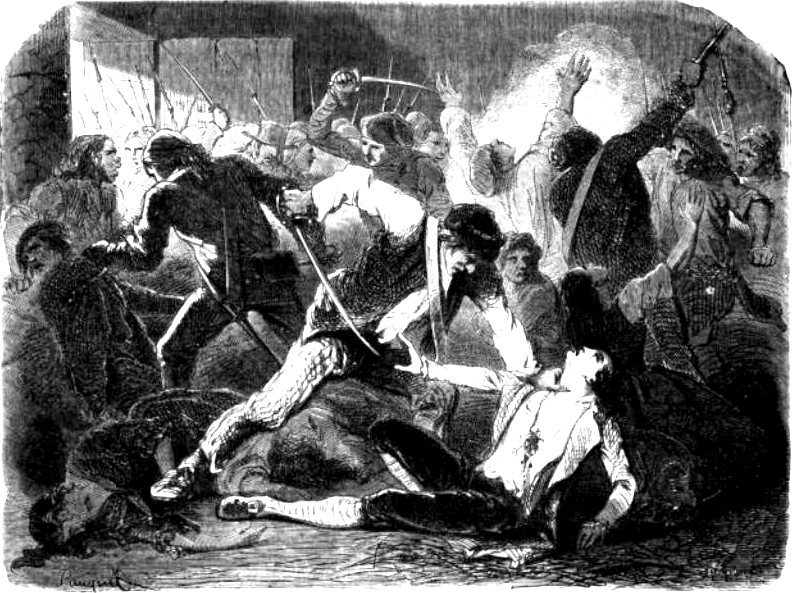 A lack of central authority during a period of national crisis led to one of the worst events of the French Revolution. On 2nd September 1792, news of the fall of the fortress at Verdun and the Prussian invasion of France and reached Paris. The last remaining deputies in the Constituent Assembly - soon to be replaced by the Legislative Assembly - ordered that the tocsin (alarm bell) be rung and that the alarm guns be fired.
A lack of central authority during a period of national crisis led to one of the worst events of the French Revolution. On 2nd September 1792, news of the fall of the fortress at Verdun and the Prussian invasion of France and reached Paris. The last remaining deputies in the Constituent Assembly - soon to be replaced by the Legislative Assembly - ordered that the tocsin (alarm bell) be rung and that the alarm guns be fired.The massacres began as a crowd attacked a group of non-juring priests on their way to imprisonment in the Abbey of Saint-Germain-des-Prés because they had refused to take the oath of loyalty to the Civil Constitution of the Clergy. The crowd mutilated and killed all twenty-four of them. Over the next few days, crowds broke into other prisons in Paris to attack the inmates. Some assailants feared that the prisoners would become counter-revolutionaries once the Prussians took Paris; some worried about the capital's diminishing food stocks; others just wanted bloody retribution.
Many other non-juring clergymen suffered the same fate as the twenty-four priests, including three bishops and over two-hundred priests. Imprisoned aristocrats also became a target for the killers, notably the Princesse de Lamballe, sister-in-law to the Duc d'Orleans and friend of Queen Marie Antoinette. Approximately twelve-hundred prisoners died during the five days of attacks.

No comments:
Post a Comment